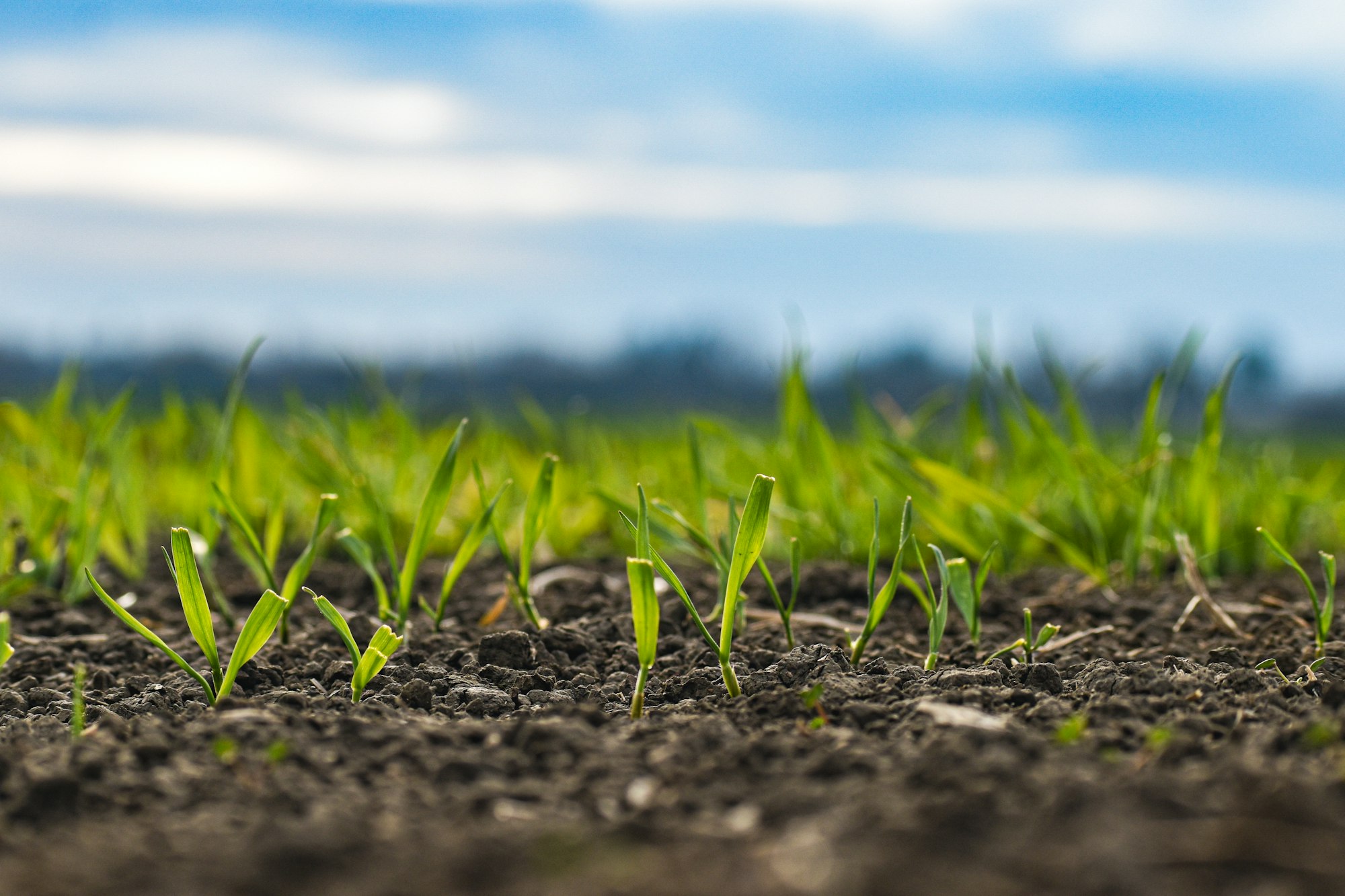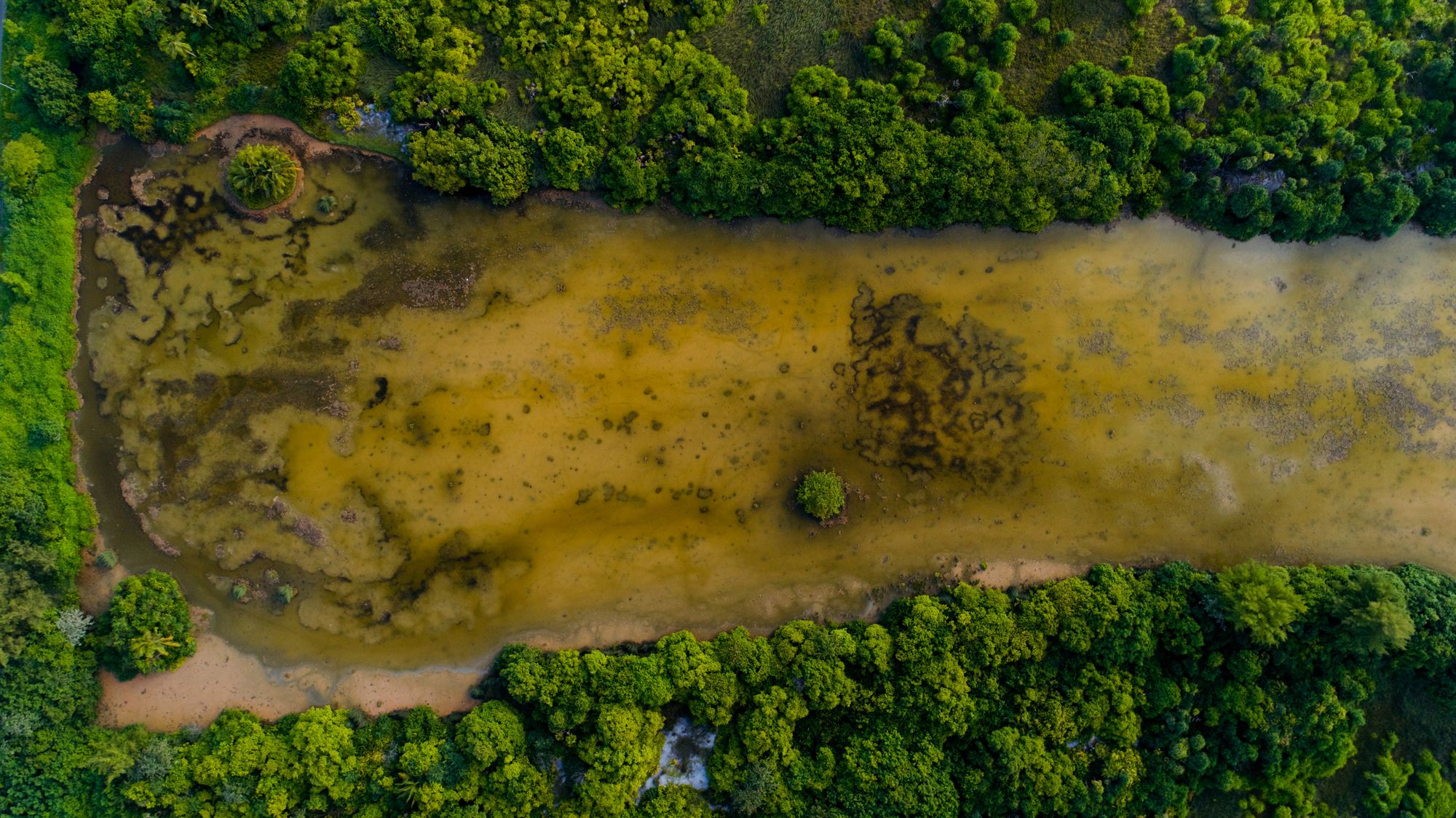Roots, Microbiomes And Agricultural Growth

There is a reason for why so many farmers are under pressure for using chemical agents to improve their crop growth rate and cultivatiton yield. A very good reason. Over the years, a variety of insecticides and herbicides have been scientifically proven to be toxic, damaging ecosystems and poisoning humans in droves. Take Monsanto's Roundup. Arguably the most popular herbicide in the world, it is spread over thousands of acres of corn and wheat fields in North America, and it is filled with carcinogenic substances that have caused cancers like non-Hodgkin lymphoma in farmers.
Similarly, synthetic fertilisers can damage healthy soil and be run-off into nearby rivers or lakes to cause community-razing algal blooms (more on this later). I don't usually give much importance to the 'organic' labels in supermarkets, given how vague and susceptible to loop-holes they seem to be - but a crop labelled 'organic' does at least mean that it has been grown without any such chemical agents, and for that I can respect it. (Whether there are loop-holes for that I don't know, but I try to think positive about it, anyway.) Unfortunately, getting rid of synthetic fertilisers is a difficult task. And it's not just because people will be people and will remain stubborn about things - it is estimated that, without them, agriculture would only be able to sustain about half of today's world population.
I should note that not all fertilisers are bad. Manure is a fertiliser, too - an organic one - and so are compost, bone meal and peat. These are not bad (though they might smell a bit). Why not? In layman's terms, it is due to the solubility of the fertilisers and the way they interact with the microbiome inside the soil. In fact, let me make this clear: soil is not just a random mixture of minerals packed together in the ground - it is a dynamic, living system of both inorganic and organic material structured in such a way as to allow billions and billions of organisms to live inside it. In other words, soil can be thought of as an entire ecosystem by itself.
A Cycle Of Life
In principle, the purpose of synthetic fertilisers is to provide a concentrated nutrient boost of ammonium ions (for nitrogen), phosphate ions and some magnesium through the soil and into our crops. This allows them to produce essential biological molecules like chlorophyll, DNA, ATP, etc. that make them grow more quickly and end up larger. By itself, this is fine. The issue comes when you start looking at the smaller details that change around the plant because of it.
You see, if left to its own devices, nature has an almost pedantically refined way of obtaining the resources required to grow plants. Minerals and phosphate ions, for instance, are introduced into the soil via millenia of the crushingly slow geological motions of the erosion and deposition of mountains and rivers (a field of study called geobiology). In comparison, ammonium ions cannot be obtained from the mountains or sedimentary storages in the sea. Instead, they are obtained another way. Enter: the nitrogen cycle.
A fact: around 78 percent of our atmosphere is made of nitrogen gas, with 21 percent being oxygen and the rest being a mixture of argon, carbon dioxide and other gases. Since plants only need ammonium ions in the soil for the nitrogen inside it, why do plants not just use the nitrogen in the air directly? Basically, nitrogen gas is simply too unreactive/inert to be transformed into anything useful for the plants, and so it must be converted into other, more reactive forms first. This is the job of communities of bacteria living in symbiosis with the plant's roots.
Around the roots, conditions are warm, moist and (usually) full of organic matter. This forms an excellent home for bacteria to live in - and plants know it. Like any good entrepeneur, plants such as legumes are keen on making the most out of their capricious little neighbours, and so they have evolved to be able to essentially trade resources with them. The nutrient-exchanging area around such roots is known as the rhizosphere. Here, some species of bacteria fix nitrogen gas in the air into ammonia and ammonium ions, with other species oxidising this into nitrites and nitrates (a process called nitrification). These molecules are assimilated by the plants while they share some of their sugars with the bacteria. Then, if there are too many nitrate ions, another set of bacteria turns them back into nitrogen gas by denitrification - restarting the cycle all over again.
Under normal circumstances, the nitrogen cycle would keep going and would sustainably feed the ecosystem with nitrogen. Dead organisms and excreted waste would release further ammonia and nitrogen to fuel the cycle (as microscopic saprobionts decompose them), and it would probably continue indefinitely. But, unfortunately, synthetic fertilisers pretty much muck up everything by negating the bacteria entirely. Due to their high salt concentrations, they cause significant portions of good bacteria in the soil not accostumed to the change to decline. At the same time, nitrifying and denitrifying bacteria start consuming so much of the nutrients that, in their complex mix of metabolic pathways, they inadvertedly deplete the soil of organic matter. And, according to USDA soil scientist Rick Haney, the more organic matter (i.e. carbon-based molecules) present in the soil, the healthier it is.
Eventually, the use of synthetic fertilisers destroys the soil. Another unfortunate side-effect of these chemicals is their solubility in watered ground. While they are easily and rapidly taken up by plants, some of the product inevitably dissipates into small rivulets of water caused by rain or irrigation. Over time, such streams can lead the lab-produced nutrients into lakes or rivers, and then, suddenly, vroomf! Algae in the body of water consume the fertiliser and grow uncontrollably, spreading over the water surface and preventing sunlight from reaching the bottom of the lake/river. This stops aquatic plants from photosynthesising and producing oxygen, leaving the water hypoxic as decomposers consume the remaining oxygen and suffocate all living creatures in the vicinity. The habitat dies - a result caused by the insidious process known as eutrophication. Honestly, look it up; it's not pretty.

Nature can heal the damage, but people must give it a chance to do so. This does not mean that we stop growing crops. Instead, we just find an alternate way to cultivate them.
BNIs & Biodiversity
Forests are amazing. Their wildlife is chock-full of niches and inhabiting species that work together in grand, dynamic communities. They have weeds, fungi, insects and all the things farmers try to kill with toxic chemicals - and yet their soil is rich with carbon and is the healthiest soil you can find! Through the course of a billion years, nature has built this close to perfection, and it is a prime example of the prosperity that including biodiversity and working with nature can bring to your fields.
Organic fertilisers are a good start to this. Unlike their synthetic kind, these do not dissolve or degrade as quickly and so are assimilated by plants over longer periods of time. This reduces the amount of unwanted run-off into large bodies of water (so no algal blooms) and positively regulates the amount of beneficial bacteria and carbon present in the soil. A recent study also found that organic fertilisers decrease the amount of poisonous heavy metals like lead in the soil, which is just another added benefit. You could also introduce some animals, biological pest control and cover crops to the land, enlargening the ecosystem and increasing the complexity of the nutrient cycles in the soil. All good.

In other fields, researchers have steadily been investigating the ways that plants can manage their interaction with bacteria via their rhizosphere. Apparently, they can do this by secreting substances referred to as exudates, which influence the activity and metabolism of certain bacterial populations. Biological nitrification inhibitors (BNIs) are especially promising, as these tell nitrifying bacteria like nitrosomonas to stop turning ammonium ions into nitrates. In the wild, plants like wheat stalks release BNIs when they are saturated with nitrates, thereby allowing them to conserve the rest for later use. This presents an opportunity for us; if we can grow BNI-secreting crops alongside our regular crops, not only would it increase biodiversity, but it would also allow us to more efficiently regulate how fertilisers are being absorbed by the plants and maximise their potential. Of course, this would not work well with synthetic fertilisers, as they would only be wasted and run-off if bacteria were prevented from processing them (not that it would be a good idea, anyway!).
There is much research being made in soil optimisation, and with good reason; soil microbiomes and nutrient cycles, as scrutinised as they may be, are still not fully understood. There are still secrets to be found, so to speak. Nonetheless, we have sufficient understanding to know what NOT to do - so it would be nice to see more people take it to heart. We'll see what happens, I suppose.
References
- Guillou, I. (2021). Getting to the root of soil nitrogen. Chemistry World. Retrieved from https://www.chemistryworld.com/features/getting-to-the-root-of-soil-nitrogen/4013343.article
- Ritchie, H. (2017). How many people does synthetic fertilizer feed? Our World in Data. Retrieved from https://ourworldindata.org/how-many-people-does-synthetic-fertilizer-feed
- Schiffman, R. (2017). Why It’s Time to Stop Punishing Our Soils with Fertilizers. Yale School of the Environment. Retrieved from https://e360.yale.edu/features/why-its-time-to-stop-punishing-our-soils-with-fertilizers-and-chemicals
- Lin, W. et al (2019). The effects of chemical and organic fertilizer usage on rhizosphere soil in tea orchards. PLoS One. Retrieved from https://www.ncbi.nlm.nih.gov/pmc/articles/PMC6538140/
- Selman, M. et al (2008). Eutrophication and hypoxia in coastal areas: a global assessment of the state of knowledge. World Resources Institute. Retrieved from https://www.researchgate.net/publication/285775211_Eutrophication_and_hypoxia_in_coastal_areas_a_global_assessment_of_the_state_of_knowledge
- Subbarao, G. V. et al (2013). Potential for biological nitrification inhibition to reduce nitrification and N2O emissions in pasture crop-livestock systems. Animal. Retrieved from https://pubmed.ncbi.nlm.nih.gov/23739474/
